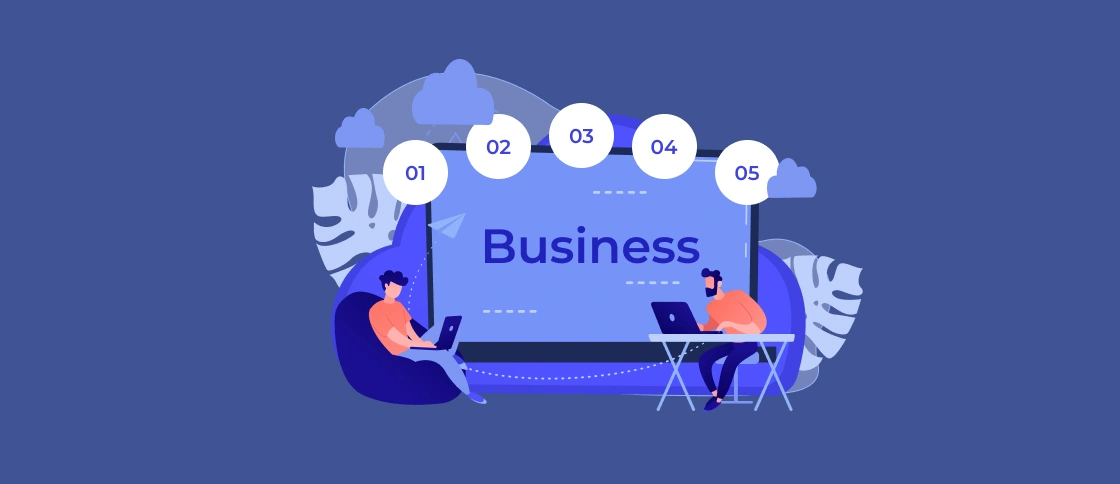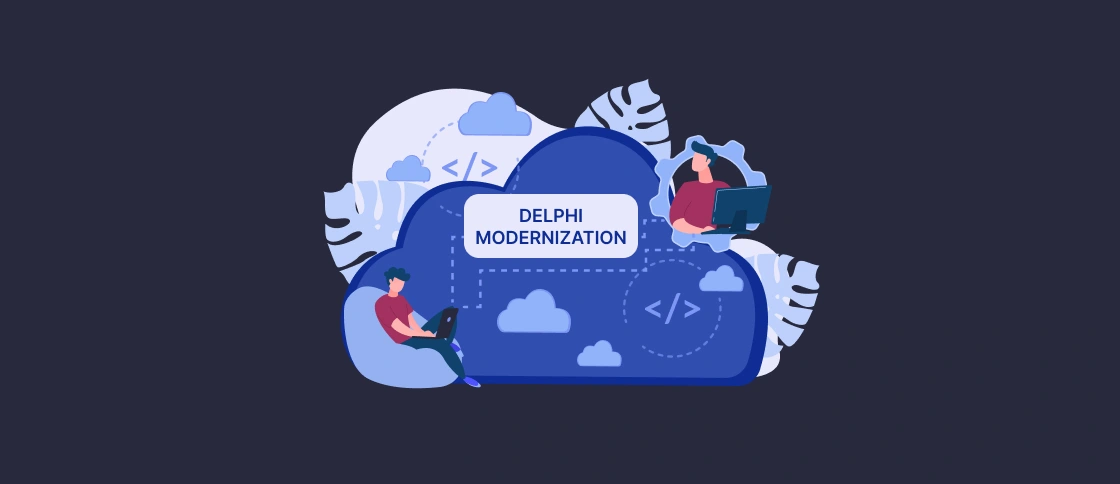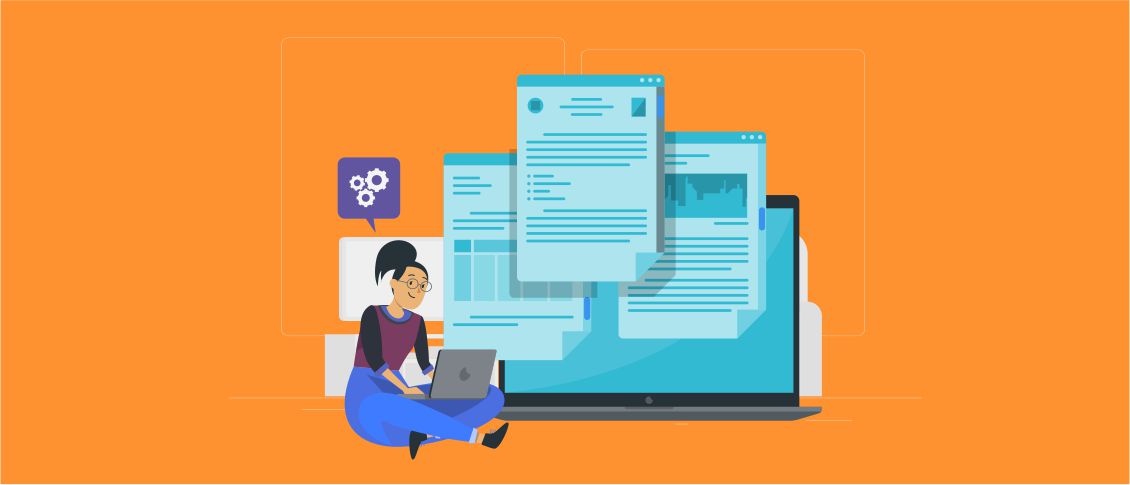- Key Takeaways
- Executive Summary & Reader Intent
- Why Trading Platform Legacy Modernization Matters Now
- Where Legacy Systems Stand: Mainframe Baseline and Risks
- Key Challenges in Legacy Applications
- #1 Slow response times and throughput bottlenecks
- #2 Data fragmentation across many systems
- #3 Manual processes slowing reconciliation
- #4 Governance and observability gaps
- Design Principles for Trading Platform Legacy Modernization
- #1 Microservices for scalability
- #2 Multi-layered design to decouple from mainframes
- #3 Event-driven and API-first integration
- #4 Unified data access layer
- #5 Non-functional priorities: resiliency, elasticity and fault isolation
- Modernization Strategies for Legacy Systems and Trading Platforms
- #1 Re-platforming vs. re-architecting
- #2 Strangler-Fig pattern
- #3 Cloud migration
- #4 API-first integration
- #5 Coexistence strategy
- Security and Compliance in Legacy Modernization
- Delivery at Scale: DevOps, CI/CD and Legacy SCM Modernization
- Data, Analytics and AI in Trading Platform Modernization
- Case Study: Legacy Trading Platform Modernization in Finance
- Roadmap, ROI and KPIs for Legacy Modernization
- Softacom Can Help
- Conclusion
Legacy trading platforms are those applications written in old code. A business created it decades ago but the app still powers critical operations. Company leaders often worry that updating the system will break it and lead to problems. But at the same time, the business cannot afford not to maintain it because it runs many operations.
For these reasons, trading platform legacy modernization is no longer optional. The company will have to face it sooner or later. CIOs and CTOs now face a choice. They can continue patching infrastructure or embark on an application modernization roadmap. This can help ensure long-term stability.
Key Takeaways
- Legacy trading platforms increase operational risk and raise compliance costs.
- Modernization strategies reduce complexity and improve agility.
- A modern trading platform enables faster order execution and stronger compliance by design.
- KPIs for success are latency reduction, higher throughput, fewer incidents and lower cost-to-serve.
Executive Summary & Reader Intent
This guide is for CIOs, CTOs, Heads of Trading/Ops, and platform leads. You will learn key risks, modernization strategies, design patterns and KPIs. This will help you build a future-ready trading platform.
If your system was originally developed in Delphi, partnering with an experienced Delphi developer can significantly reduce migration risks and accelerate modernization.
Why Trading Platform Legacy Modernization Matters Now
Today, client expectations are high, and product cycles are rapid. Trading platform legacy modernization ensures that older systems are adaptive and secure. Legacy app dev based on monolithic architectures responds slowly and increases compliance risks. Regulations (MiFID II and SEC) are pushing companies toward Azure application modernization or other options.
Where Legacy Systems Stand: Mainframe Baseline and Risks
Some platforms still rely on mainframes created 30-40 years ago. They operate on obsolete languages and have limited vendor support. They often lack modern security controls. And this exposes them to security vulnerabilities because of outdated protocols. Things like siloed data or batch processing create systemic fragility.
Key Challenges in Legacy Applications
#1 Slow response times and throughput bottlenecks
Legacy trading platforms often struggle with latency, especially during traffic spikes. As a result, the platform responds slowly. And this impacts order execution quality. This, in turn, leads to dissatisfied clients and missed business opportunities. Throughput bottlenecks also limit the system’s ability to handle increasing transaction volumes. And this is critical in today’s global trading environments.
#2 Data fragmentation across many systems
Trading platforms accumulate silos of data spread across mainframes, databases and integrations. Such a fragmentation makes it difficult to gain a general view of positions and risks. Users need to reconcile data manually across sources. It complicates reporting and compliance efforts.
#3 Manual processes slowing reconciliation
Many institutions still reconcile settlements and trades by manual uploads. These processes are prone to errors and take a lot of time. They also limit the ability to react quickly to discrepancies. This results in financial loss or regulatory penalties.
#4 Governance and observability gaps
Without proper monitoring, analysis of incidents can become guesswork. Governance gaps mean controls are often inconsistently applied. This leaves companies vulnerable to compliance breaches.
If you don’t have observability tools, it can be harder to measure latency and reliability. So, you don’t have data for improvements.
Design Principles for Trading Platform Legacy Modernization
Trading platform legacy modernization should move away from monolithic architectures. And move you toward adaptive designs that evolve with market and regulatory demands.
#1 Microservices for scalability
Breaking large systems into smaller services allows trading platforms to scale horizontally. Each service can be optimized for specific functions. This allows for faster performance and easier fault isolation.
#2 Multi-layered design to decouple from mainframes
Modern trading platforms rely on a layered design. This creates a separation between the user interface, business logic and data access. Also, this provides flexibility to upgrade or change individual layers. But without disrupting the entire system.
#3 Event-driven and API-first integration
Trading platform legacy modernization is necessary for real-time responsiveness. Event-driven design ensures that trades and compliance alerts are processed instantly. API-first integration connects internal systems and external partners. It eliminates bottlenecks and makes extending platform capabilities easier.
#4 Unified data access layer
One of the biggest barriers in legacy applications is fragmented data. A unified data access layer ensures that all functions share the same data source.
This supports real-time dashboards, advanced analytics, and AI models. And it doesn’t require costly migrations of all historical data.
#5 Non-functional priorities: resiliency, elasticity and fault isolation
Modern trading platforms must withstand reality. And the reality usually means high loads, unexpected market surges and cyber threats. Non-functional goals such as resiliency, elasticity and automated fault isolation are essential. They ensure the platform can scale on demand. They help it recover from incidents and continue operations even if services fail.
These architectural principles help trading platforms stay secure and performant. They also stay compliant with regulatory requirements.
Modernization Strategies for Legacy Systems and Trading Platforms
Trading platform legacy modernization is not a one-size-fits-all solution. The right path depends on the platform’s current architecture and business priorities.
Below, we list strategies financial institutions use to move from legacy apps.
#1 Re-platforming vs. re-architecting
When you move the system to a modern architecture with minimal code change, you re-platform. This approach offers faster results and reduced architecture costs. At the same time, it preserves much of the legacy complexity.
Re-architecturing is more transformative. It means redesigning the application into modular components. It requires more effort but delivers greater scalability and long-term ROI.
#2 Strangler-Fig pattern
This approach of trading platform legacy modernization is named after a strangler fig tree growing around its host. It allows teams to build new functionality around legacy components. And they gradually replace them over time.
For trading platforms, this means introducing new features without disrupting the system. The legacy core keeps running while the new services take over incrementally. This reduces cutover risk and avoids costly “big-bang” migrations.
#3 Cloud migration
Cloud adoption is key. Institutions can choose between different models:
- IaaS (Infrastructure as a Service)
- PaaS (Platform as a Service)
- Managed services
The right approach depends on the balance between scalability and regulatory requirements. For example, latency-sensitive trading workloads may use hybrid models. They combine on-premises systems with cloud-based analytics.
#4 API-first integration
Legacy trading platforms often rely on proprietary protocols or point-to-point integrations. They limit flexibility. An API-first strategy means designing services with an API interface from the start. This ensures interoperability with partners and regulators. Also, it enables faster rollout of new products.
APIs also make it easier to adopt innovations like AI. And there is no need to rewrite the whole system.
#5 Coexistence strategy
Trading operations are critical. And most organizations cannot afford long downtimes.
A coexistence strategy ensures the old and new systems run in parallel. You can use techniques such as dual-run and canary releases. If a new risk engine or matching service has issues, the legacy component can still handle the load. This approach reduces operational risk and allows for continuous delivery of modernized features.
Security and Compliance in Legacy Modernization
In financial services, security and compliance are at the core of trading platforms. Legacy systems with outdated protocols expose firms to risk. Modern designs embed protections at every layer.
- End-to-end encryption. Data must be encrypted both in transit and at rest. Use modern standards like TLS 1.3 and AES-256. They ensure data remains safe from breaches and unauthorized access.
- Zero-trust access. Zero-trust verifies every request. Fine-grained entitlements restrict access to only what each user or system needs.
- Regulatory alignment. Regulations such as MiFID II, SEC and FINRA need transparency and integrity. Automated logging and secure timestamps simplify compliance.
- Continuous compliance automation. Policies are codified directly into the platform. Automated evidence collection lowers audit costs and catches compliance gaps early.
Delivery at Scale: DevOps, CI/CD and Legacy SCM Modernization
Modernization is also about how changes are delivered. And here, legacy SCM modernization plays a key role alongside DevOps and CI/CD. DevOps practices and automation enable safer updates and maintain stability in mission-critical systems.
CI/CD pipelines reduce manual errors and speed up deployments. Progressive delivery methods, like canary or blue/green releases, cut disruption. Legacy SCM modernization improves collaboration, auditability and rollback safety.
Data, Analytics and AI in Trading Platform Modernization
Modern trading platforms must turn fragmented data into real-time insight. Streaming technologies provide instant visibility into trades, risks and liquidity. And advanced analytics shows performance bottlenecks and opportunities to improve the platform.
AI and machine learning take this further. They optimize trading strategies, detect fraud and automate anomaly detection. With strong data governance, institutions ensure that data remains compliant in high-stakes markets.
Case Study: Legacy Trading Platform Modernization in Finance
A European bank partnered with Softacom to modernize its legacy desktop systems and migrate to Amazon Web Services. The project involved auditing and optimizing legacy code, redesigning workloads, and deploying a secure AWS environment. As a result, the bank improved efficiency, strengthened security, reduced maintenance complexity, and simplified the release of new updates and features.
Roadmap, ROI and KPIs for Legacy Modernization
Every modernization journey begins with a clear baseline. An audit of technical debt and security vulnerabilities sets priorities. A phased roadmap uses pilots, domain slicing and progressive decommissioning to cut disruption. This step-by-step approach reduces migration risks while ensuring business continuity.
The financial case is strong. Modernization lowers maintenance costs and reduces operational expenses. Set KPIs to measure success. For example, latency, higher release frequency, fewer incidents, and a lower cost-to-serve.
Softacom Can Help
At Softacom, we specialize in helping financial institutions modernize mission-critical trading platforms. We have deep expertise in legacy systems, cloud migration and microservices. Our team ensures seamless transitions that balance innovation with stability.
Request our software product modernization services to ensure your trading platform evolves safely and efficiently.
Conclusion
Legacy trading platforms carry risks and barriers to innovation. You can change the situation by adopting modern architectures and compliance by design. Modernization is safeguarding competitiveness and building long-term value.





